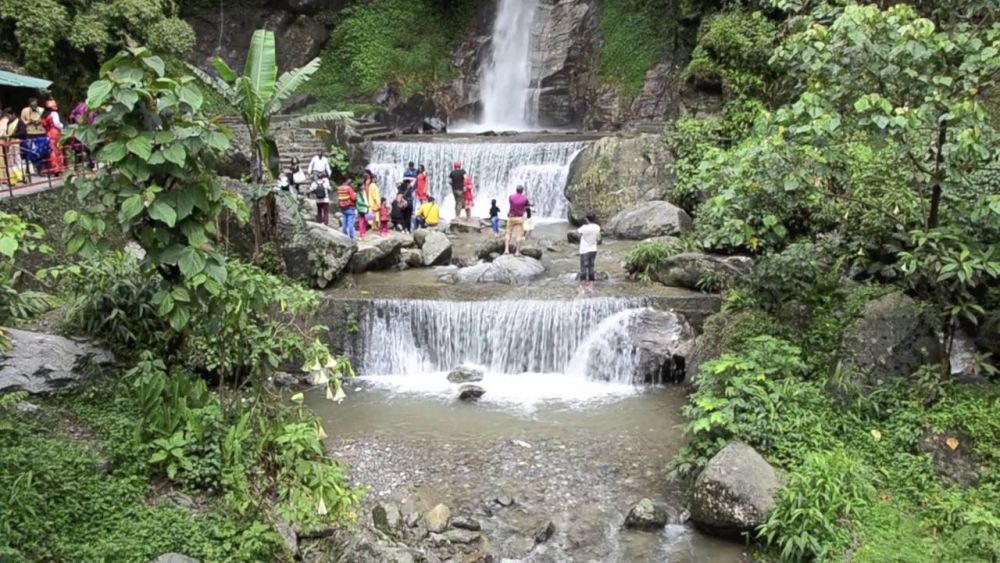

The northeastern state of Sikkim, nestled in the Himalayan mountains, is a haven for tourists seeking tranquility and scenic beauty. Among its numerous attractions, the Banjhakri Waterfalls have emerged as a popular spot for visitors to Gangtok, the capital of Sikkim. Located at a distance of about 7 kilometers from the city center, these waterfalls have become synonymous with the spellbinding natural beauty that the region is renowned for.
The history of tourism at Banjhakri Waterfalls is relatively recent compared to other historical sites in Sikkim. It was developed into a tourist park in the early 2000s. The name 'Banjhakri' comes from the local folklore, which speaks of a shamanic deity inhabiting the forested areas of Sikkim. The term 'Banjhakri' means 'forest shaman', where 'ban' implies forest and 'jhakri' means healer or shaman.
Since its development as a tourist attraction, the site has been showcasing the traditional and spiritual aspects of Sikkimese culture along with its natural splendor. The park surrounding the waterfalls is dotted with ethnically designed structures that represent the shamanic culture of the indigenous people.
Visitors to the Banjhakri Waterfalls are greeted by a lush eco-park that spans across some 2 acres of woodland. The waterfalls cascade down from a height of about 70 feet, creating a spectacular backdrop for photos and nature walks. In addition to the natural beauty, the park features several statues and installations that depict scenes from native shamanistic practices.
The park also includes a man-made lake with a dragon at the center, foot bridges, a swimming pool, and a cafeteria. Picnic spots and recreational activities are available for families and large groups, making it an ideal spot for day outings.
Recent tourism trends in Sikkim are centered on sustainable travel and eco-tourism. Amid growing awareness of environmental conservation, visitors are increasingly drawn to destinations that offer natural beauty without the crowds associated with more commercially developed sites. Sikkim has been promoting itself as a destination for peaceful retreats and responsible tourism practices.
Another growing trend is in the realm of adventure tourism. Sikkim's rough terrain and pristine landscapes are a paradise for trekkers, mountain bikers, and rock climbers. Initiatives to open up more areas for such activities are in place to attract a younger and more adventure-oriented traveler demographic.
Furthermore, Sikkim's commitment to organic farming has spilled over into its tourism sector, with several resorts and home-stays offering organic food experiences, sourced from local farms. Culinary tourism is also picking up, with visitors interested in experiencing the unique flavors of Sikkimese cuisine, which is a blend of Nepalese, Tibetan, and indigenous influences.
Overall, the tourism experience at Banjhakri Waterfalls aligns with these wider trends, presenting an eco-friendly and culturally rich destination that continues to enchant visitors with its natural and spiritual heritage.